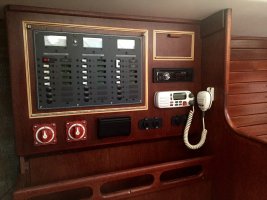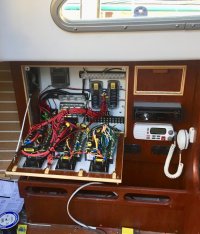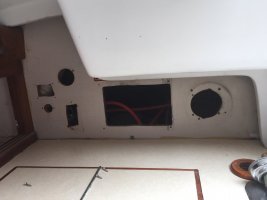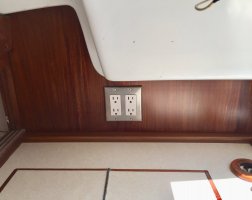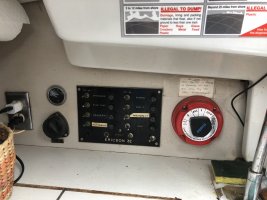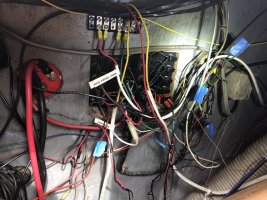Also, considering I have a Universal 25 engine, is there a reason to keep the bilge blower? It seems like this piece of equipment could just be eliminated entirely.
Even with a diesel, the bilge blower fan can remove smells and provide a sense of security. Why not keep it if does no harm and maybe some good?
Fair enough. But here's my take:
I yanked the blower out immediately. My current boat came with no fewer than three in-line fans in twenty feet of vent hose that obscured the engine bay with drooping hose and scads of attendant pump wiring.

...
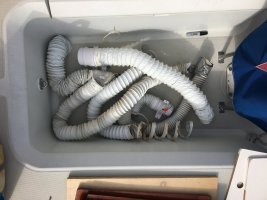
I now have a passive vent system using the two cowl vents on the transom and an additional cowl on the coaming.

I have motored 24 hours in tropical conditions with no hint the engine bay was unusually hot. And if it were, simply opening the lazarette lid would relieve more air in one minute than vent hoses in an hour.
Also: We are told that diesels a require vast intake of air to operate, and that a sealed engine compartment is a grave detriment. I doubt that applies to us. I've yet to see a sailboat like ours without free circulation, given the usual open under-cockpit layout.
But, the air filter is worth looking at. Westerbeke/Universal equipped 80s engines with clumsy tin megaphones on the air intake. These are now considered menaces, since when old they can introduce metal bits into the engine. A K&N oil filter is the usual replacement, and allows plenty of air.
So: a diesel blower doesn't hurt. Question is, does it help enough to justify being there.


